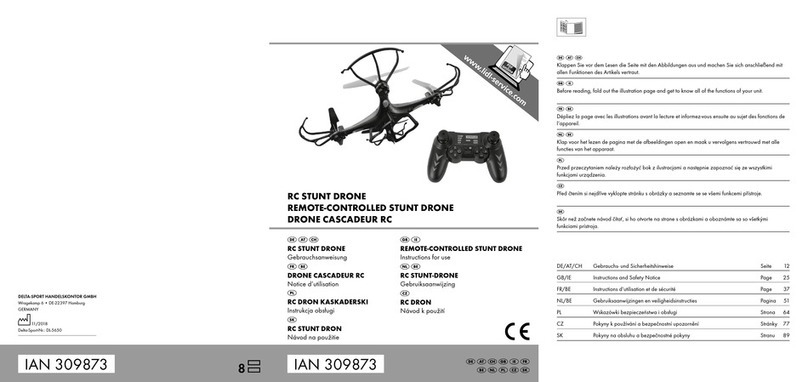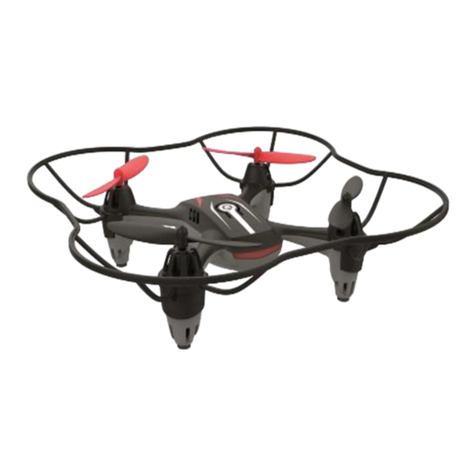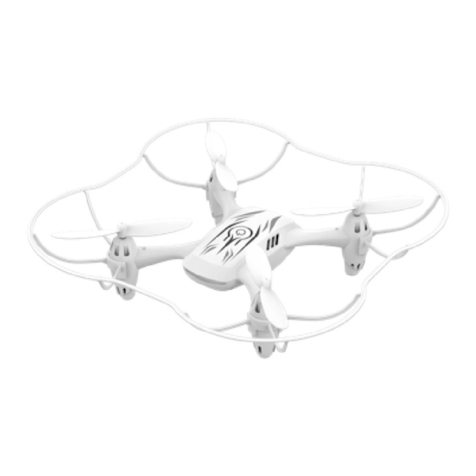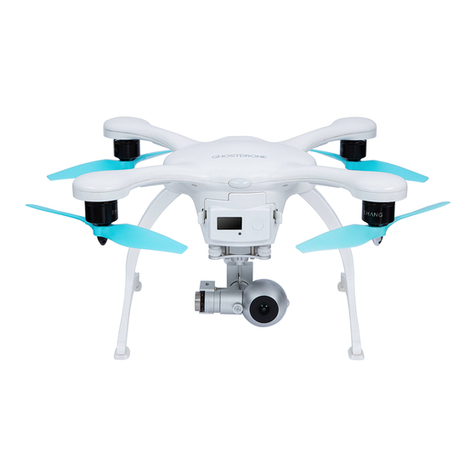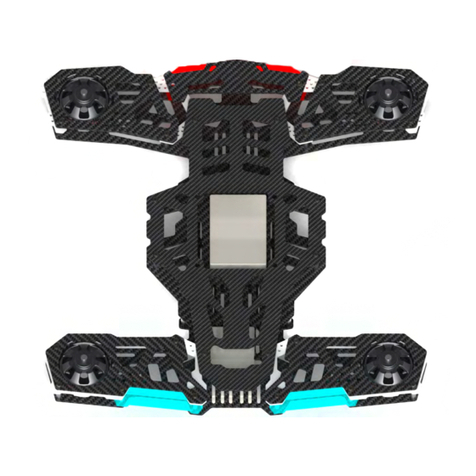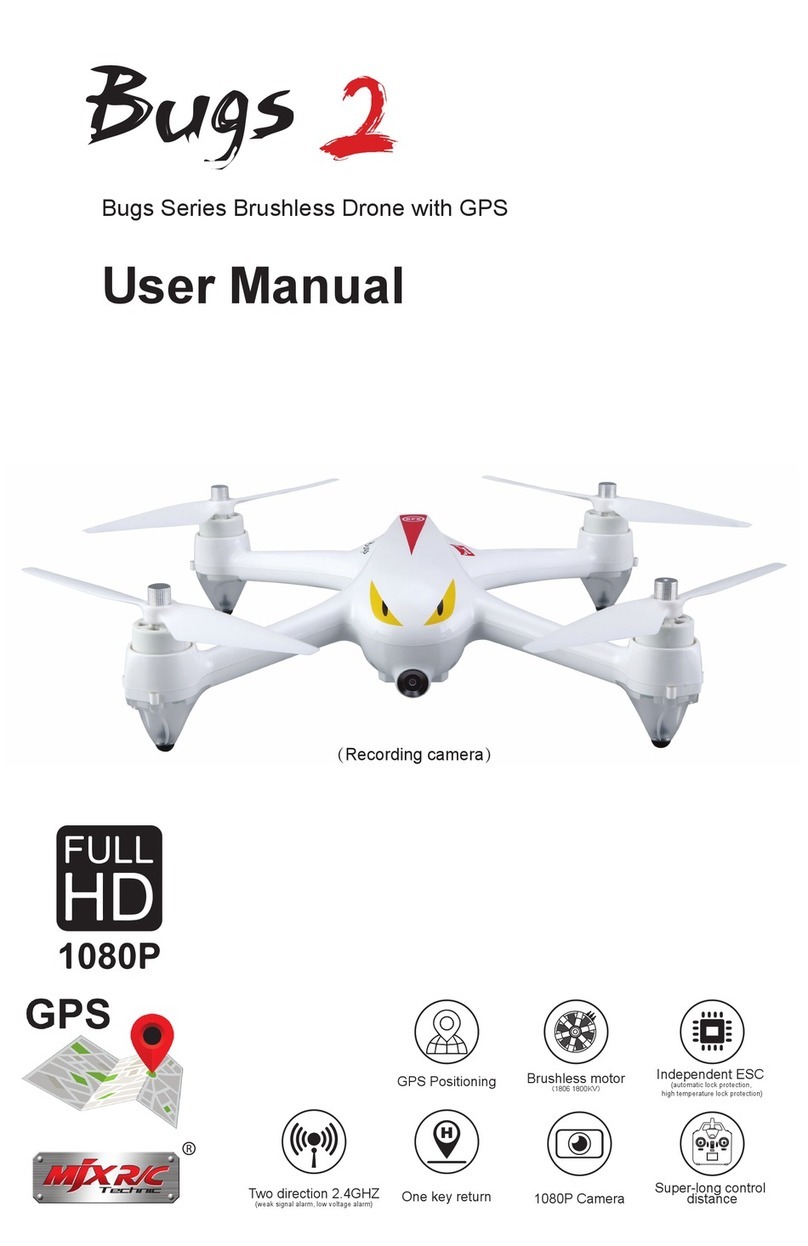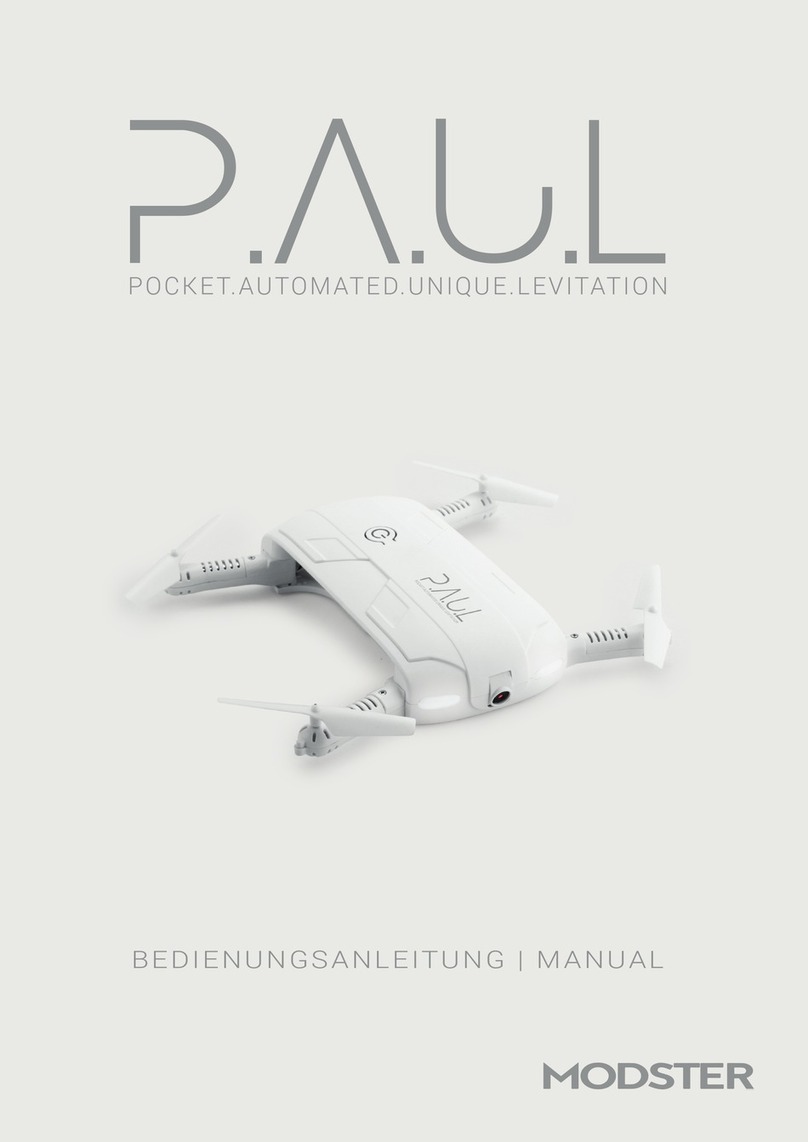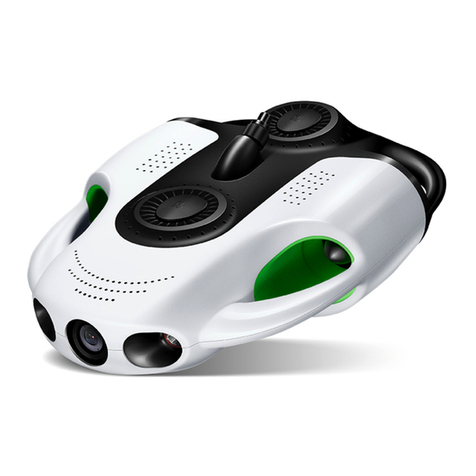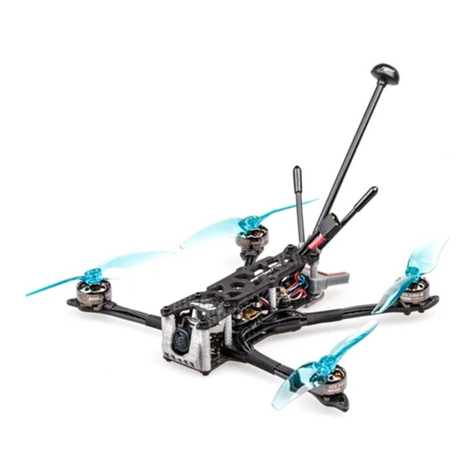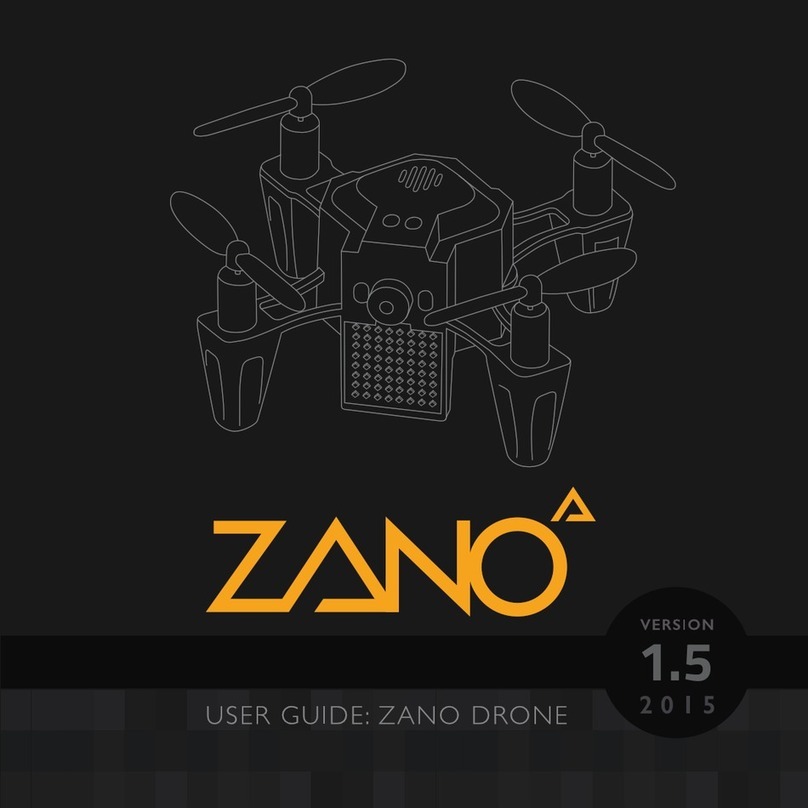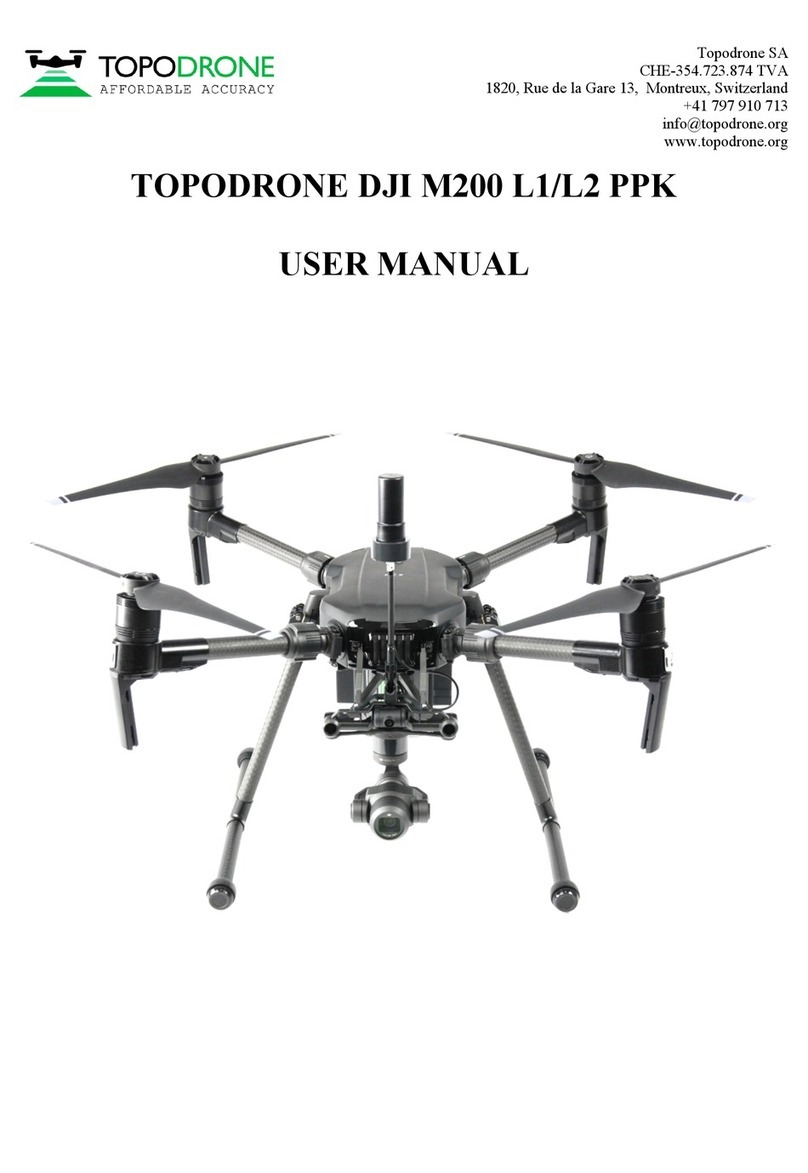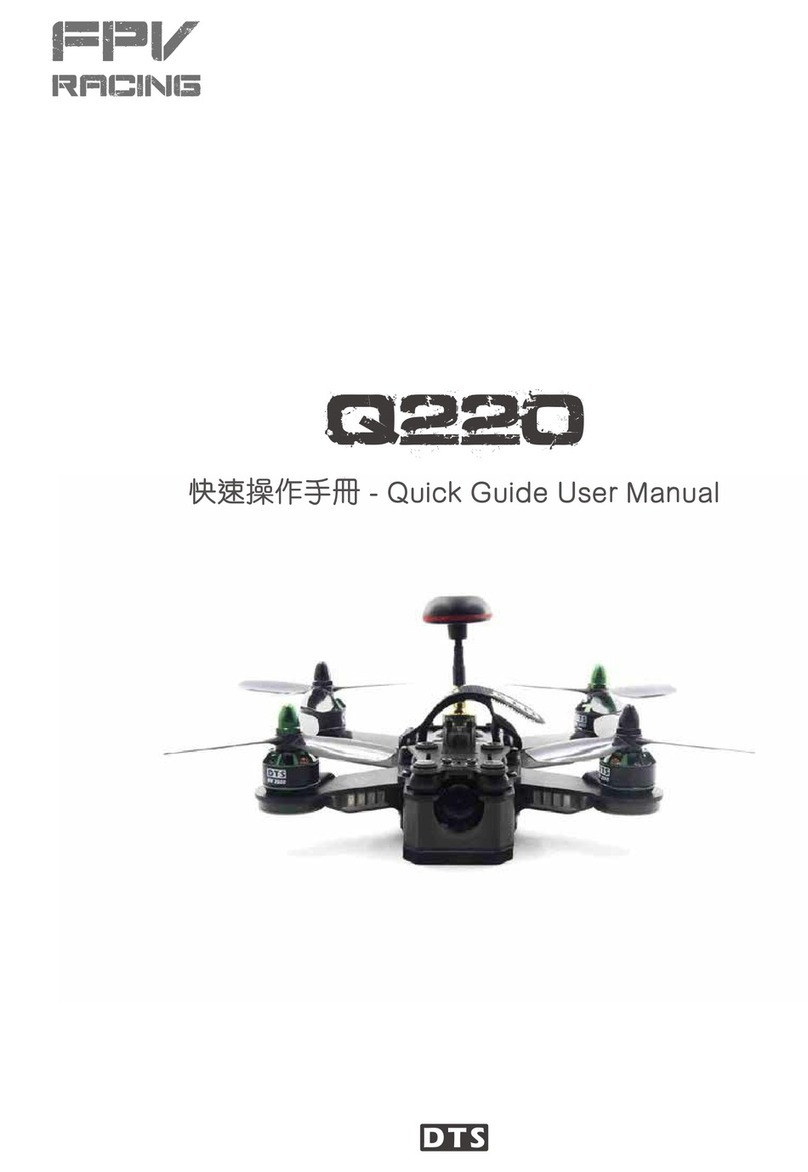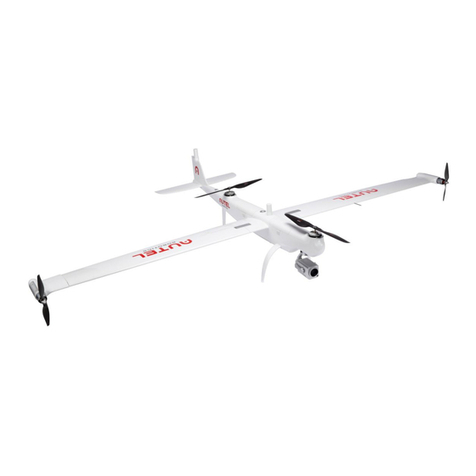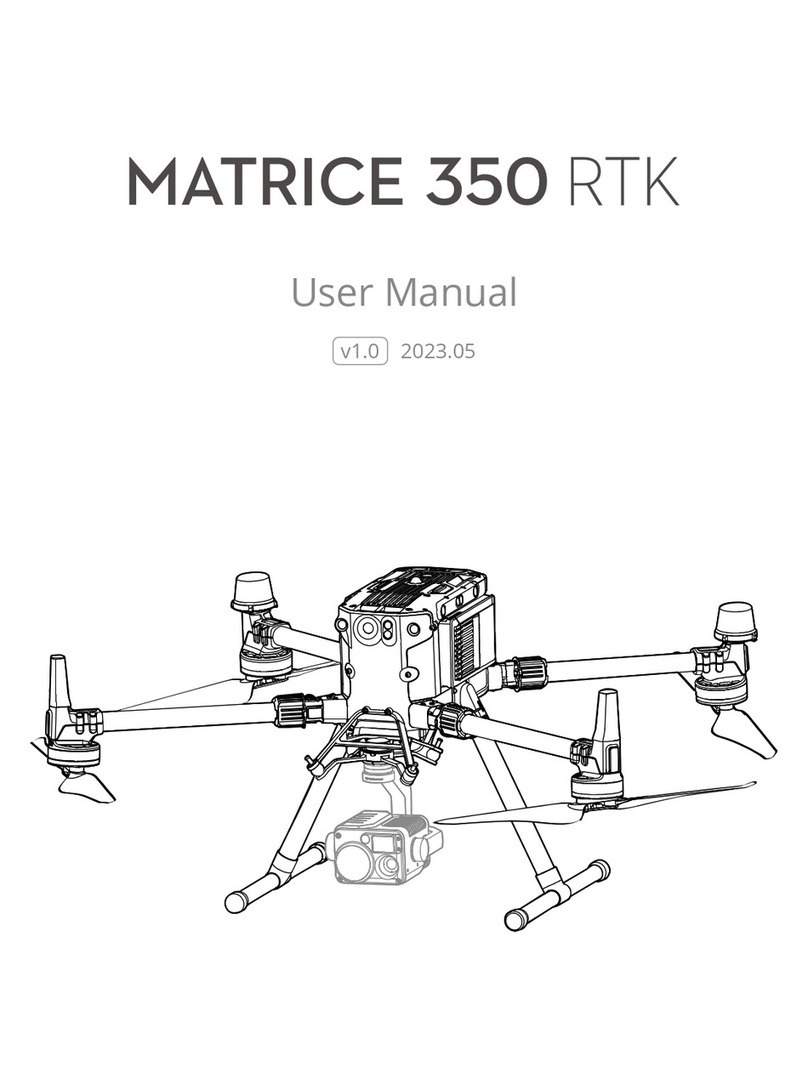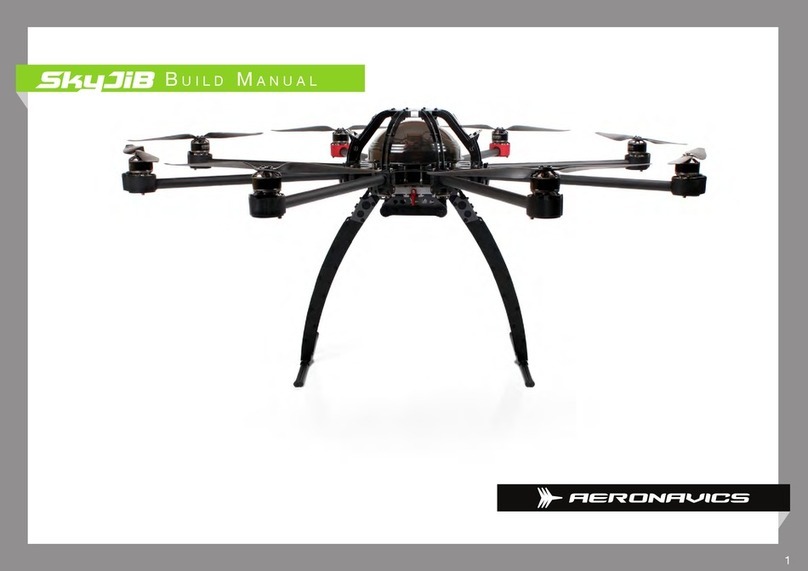DELTA-SPORT QC-6223 User manual

IAN 311499IAN 311499
REMOTE-CONTROLLED STUNT DRONE
REMOTE-CONTROLLED STUNT DRONE
Instructions for use
RC DRON
Uputstva za korisnike
RC STUNT DRON
Upute za upotrebu
ДРОН RC STUNT
Ръководство за употреба
RC STUNT DRONE
Gebrauchsanweisung
RC STUNT DRONE
Οδηγιεσ χρησησ
DRONĂ RC STUNT
Instrucţiuni de utilizare
GB/CY Instructions and Safety Notice Page 10
HR Sigurnosne upute i način korištenja Strana 22
RS Uputstva za upotrebu i bezbednosne napomene Strana 35
RO Indicaţii privind utilizarea şi siguranţa Pagina 49
BG Указания за обслужване и безопасност Страни 64
GR/CY Οδηγίες λειτουργίας και ασφάλειας Σελίδα 80
DE/AT/CH Gebrauchs- und Sicherheitshinweise Seite 94
Before reading, fold out the illustration page and get to know all of the functions of your unit.
Prije čitanja otvorite stranicu sa slikama i upoznajte se sa svim funkcijama uređaja.
Pre početka čitanja rasklopite stranicu sa slikama a zatim se u nastavku upoznajte sa svim funkcijama
uređaja.
Înainte să citiţi, deschideţi pagina cu imagini şi după aceea familiarizaţi-vă cu toate
funcţiunile aparatului.
Разгънете страницата със схемите преди да я прочетете и се запознайте с всички функции на
уреда.
Ξεδιπλώστε πριν την ανάγνωση την πλευρά με τις απεικονίσεις και εξοικειωθείτε κατόπιν με όλες τις
λειτουργίες της συσκευής.
Klappen Sie vor dem Lesen die Seite mit den Abbildungen aus und machen Sie sich anschließend mit
allen Funktionen des Artikels vertraut.
DELTA-SPORT HANDELSKONTOR GMBH
Wragekamp 6 • DE-22397 Hamburg
GERMANY
02/2019
Delta-Sport-Nr.: QC-6223/QC-6224
01.17.2019 / PM 2:20

1x 11x 2
1x 31x 42x 51x 6
1x 7
2x A2x B
A
1d 1g
1a 1b
1b 1a
1h
1f 1g
1e 1e
1c
B
G
7
7
F
40 - 70 min
4b
3
4a
3a
E
1h
1f
3
3a
D
2
5
2q
2r
2i
2h 2l
2g
2d2f
2e
2k
2a 2c
2n2p
2o
2b
2j
2m
C
2h
2a
1d
H
I J

5
L
N
M
1x
2x
3x
4 x
K
PO
SPEED4
SPEED3
SPEED2
SPEED1
Q R
3sec

6
Contents/Sadržaj
Package contents (Fig. A) ................................ 10
Quadrocopter (Fig. B) ............................. 10
Remote control (Fig. C/D) ....................... 10
Technical data ................................................... 10
Intended use ...................................................... 11
Symbols used .................................................... 11
Safety information ..................................... 11–14
Battery warning notices .................... 13–14
Foreseeable misuse ................................... 14
Inserting the batteries into the remote control
(Fig. D) ............................................................... 14
Inserting the rechargeable battery ................. 15
Removing the rechargeable battery (Fig. E) .. 15
Charging the rechargeable battery ................ 15
Under-voltage warning .................................... 15
Suitable areas for flying the quadrocopter .... 15
Flight preparation ............................................. 16
Taking off and controlling
the quadrocopter .........................................16–18
Taking off (Fig. H) ..................................... 16
Controlling the quadrocopter ...........16–17
Setting the speed (Fig. M) ....................... 17
360° rollover (Fig. N) ............................ 18
Calibration ................................................ 18
Ending the flight ................................................ 18
Rotor protection ................................................ 18
Cleaning, repair and storage ................... 18–19
Replacing the rotor blades (Fig. G) 18–19
Information on disposal ................................... 19
Disposal measures for batteries........................ 19
Notes on the guarantee and
service handling ............................................... 19
Possible defects .......................................... 20–21
Opseg isporuke (sl. A) ..................................... 22
Kvadrikopter (sl. B) .................................. 22
Daljinski upravljač (sl. C/D) ................... 22
Tehnički podaci ................................................. 22
Namjenska upotreba ....................................... 23
Upotrijebljeni simboli ........................................ 23
Sigurnosne napomene ........................... 23 – 26
Upozorenja u vezi s baterijama /
akumulatorskom baterijom! ........... 25 – 26
Predvidljiva nepropisna upotreba .......... 26
Umetanje baterija u daljinski upravljač (sl. D) 2 7
Umetanje akumulatorske baterije .................... 27
Vađenje akumulatorske baterije (sl. E) ........... 27
Punjenje akumulatorske baterije ...................... 27
Upozorenje o podnaponu ............................... 27
Prikladno okruženje za let ............................... 28
Priprema za let .................................................. 28
Polet i upravljanje kvadrikopterom ........ 28 – 30
Polet (sl. H) ..................................... 28 – 29
Upravljanje kvadrikopterom ......... 29 – 30
Namještanje brzine (sl. M) ..................... 30
Prevrtanje za 360° (sl. N) ...................... 30
Kalibriranje ............................................... 30
Završetak leta ................................................... 30
Štitnici rotora ..................................................... 30
Čišćenje, popravak i skladištenje .................... 31
Zamjena krakova rotora (sl. G) .............. 31
Napomene o zbrinjavanju .............................. 31
Postupci za zbrinjavanje baterija /
akumulatorskih baterija u otpad ..................... 31
Napomene vezane za
garanciju i usluge servisa ................................ 32
Moguće greške ....................................... 33 – 34

7
Sadržaj/Cuprins
Pachet de livrare (g.A) .................... 49
Quadcopter (g.B) ..................... 49
Telecomandă (g.C/D) ............... 49
Date tehnice ............................... 49–50
Destinație de utilizare ........................ 50
Simboluri utilizate ............................. 50
Indicații cu privire la siguranță ...... 50–54
Indicații de avertizare cu privire la
baterie/acumulator! .............. 52–54
Utilizare incorectă predictibilă ...... 54
Introducerea bateriilor în telecomandă
(g.D) ....................................... 54–55
Introducerea acumulatorului ................ 55
Scoaterea acumulatorului (g.E) ......... 55
Încărcarea acumulatorului .................. 55
Avertisment cu privire la subtensiune ... 55
Mediu corespunzător pentru zbor ....... 56
Pregătirea pentru zbor ....................... 56
Începerea zborului și acționarea
quadcopterului ............................ 56–59
Începerea zborului (g.H) ........... 57
Acționarea quadcopterului ..... 57–58
Reglarea vitezei (g.M) .............. 58
Zborul în buclă
la 360° (g.N) .................... 58–59
Calibrare ................................... 59
Încheierea zborului ............................ 59
Dispozitivul de protecție a rotorului ..... 59
Curățarea, repararea și
depozitarea ................................ 59–60
Înlocuirea palelor de
rotor (g.G) ........................ 59–60
Indicații privind eliminarea ca
deșeu .............................................. 60
Măsuri de eliminare a bateriilor/
acumulatorului .................................. 60
Indicații referitoare la garanție
și operațiuni de service ................ 60–61
Defecțiuni posibile ....................... 62–63
Obim isporuke (sl. A) ....................................... 35
Kvadrokopter (sl. B) ................................. 35
Daljinski upravljač (sl. C/D) ................... 35
Tehnički podaci ................................................. 35
Namenska upotreba ........................................ 36
Korišćeni simboli ............................................... 36
Bezbednosne napomene ......................... 36–39
Upozorenja za bateriju/punjivu
bateriju! ............................................ 38–39
Moguća nepravilna upotreba ................ 39
Stavljanje baterija u daljinski
upravljač (sl. D) ......................................... 39–40
Stavljanje punjive baterije ............................... 40
Vađenje punjive baterije (sl. E) ........................ 40
Punjenje punjive baterije .................................. 40
Upozorenje na nedovoljan napon .................. 40
Pogodna okolina za let ............................. 40–41
Priprema za let .................................................. 41
Poletanje i upravljanje kvadrokopterom . . 41–43
Poletanje (sl. H) ........................................ 41
Upravljanje kvadrokopterom ........... 41–42
Podešavanje brzine (sl. M) ............. 42–43
360°luping (sl. N) .................................. 43
Kalibracija ................................................ 43
Završavanje leta ............................................... 43
Zaštita rotora ..................................................... 43
Čišćenje, popravka i skladištenje ............ 43–44
Zamena lopatica rotora (sl. G) .............. 44
Napomene za odlaganje na otpad ............... 44
Mere za odlaganje istrošenih baterija/punjivih
baterija .............................................................. 44
Napomene za garanciju i postupak
za servisiranje ........................................... 44–45
Moguće greške ......................................... 46–47
Garancija i garantni list ................................... 48

8
Съдържание/Πινακας περιεχομενων
Παραδοτέος εξοπλισμός (εικ. Α) .................... 80
Τετρακόπτερο (εικ. B) ............................... 80
Τηλεχειριστήριο (εικ. C/D) ....................... 80
Τεχνικά χαρακτηριστικά ............................ 80–81
Προβλεπόμενη χρήση ...................................... 81
Σύμβολα που χρησιμοποιούνται ..................... 81
Προειδοποιήσεις ασφαλείας ................... 81–85
Προειδοποιήσεις για τις
μπαταρίες/τον συσσωρευτή! ........... 83–85
Προβλέψιμη εσφαλμένη χρήση ............... 85
Τοποθέτηση μπαταριών στο τηλεχειριστήριο
(εικ. D) ................................................................ 85
Τοποθέτηση συσσωρευτή ................................. 85
Αφαίρεση συσσωρευτή (εικ. Ε) ......................... 85
Φόρτιση συσσωρευτή ............................... 85–86
Προειδοποίηση υπότασης ............................... 86
Κατάλληλο περιβάλλον πτήσης ....................... 86
Προετοιμασία πτήσης ....................................... 86
Έναρξη πτήσης και έλεγχος
τετρακόπτερου ........................................... 87–88
Έναρξη πτήσης (εικ. H) ........................... 87
Έλεγχος τετρακόπτερου ................... 87–88
Ρύθμιση ταχύτητας (εικ. Μ) ..................... 88
Αναστροφή 360° (εικ. Ν) .............. 88–89
Βαθμονόμηση ........................................... 89
Τερματισμός πτήσης ......................................... 89
Προστατευτικό ροτόρα ..................................... 89
Καθαρισμός, επισκευή και αποθήκευση ......... 89
Αντικατάσταση έλικα (εικ. G) ........... 89–90
Υποδείξεις για την απόρριψη .......................... 90
Μέτρα απόρριψης για τις μπαταρίες/
τον συσσωρευτή ................................................ 90
Υποδείξεις σχετικά με την εγγύηση
και τη διαδικασία σέρβις .......................... 90–91
Πιθανά σφάλματα ..................................... 92–93
Обхват на доставката (фиг. A) ..................... 64
Квадрокоптер (фиг. B) ........................... 64
Дистанционно управление
(фиг. C/D) ................................................ 64
Технически данни ................................. 64 – 65
Използване по предназначение ................... 65
Използвани символи ...................................... 65
Указания за безопасност ..................... 65 – 69
Предупредителни указания за
батериите/акумулаторната
батерия! ......................................... 67 – 69
Предвидима неправилна
употреба .................................................. 69
Поставяне на батерии в дистанционното
управление (фиг. D) .............................. 69 – 70
Поставяне на акумулаторната батерия ...... 70
Сваляне на акумулаторната батерия
(фиг. E) .............................................................. 70
Зареждане на акумулаторната батерия .... 70
Предупреждение за ниско напрежение .... 70
Подходяща среда за полети ......................... 71
Подготовка на полета .................................... 71
Начало на полета и управление на
квадрокоптера ....................................... 71 – 74
Начало на полета (фиг. H) ......... 71 – 72
Управление на квадрокоптера . . 72 – 73
Настройка на скоростта (фиг. M) ....... 73
Превъртане на 360° (фиг. N) .............. 73
Калибриране ................................ 73 – 74
Прекратяване на полета ................................ 74
Предпазители на роторите ........................... 74
Почистване, ремонт и съхранение .............. 74
Смяна на роторните лопатки (фиг. G) 74
Указания за изхвърляне .................................. 75
Мерки за изхвърляне на батериите/
акумулаторната батерия ............................... 75
Указания за гаранцията и процеса
на сервизно обслужване ..................... 75 – 77
Възможни неизправности .................... 78 – 79

9
Inhaltsverzeichnis
Lieferumfang (Abb. A) ...................................... 94
Quadrocopter (Abb. B) ........................... 94
Fernsteuerung (Abb. C/D) ...................... 94
Technische Daten .............................................. 94
Bestimmungsgemäße Verwendung ................. 95
Verwendete Symbole ....................................... 95
Sicherheitshinweise ................................... 95 - 99
Warnhinweise Batterie/Akku! ........ 97 - 98
Vorhersehbarer Missbrauch ........... 98 - 99
Batterien in die Fernsteuerung
einsetzen (Abb. D) ............................................ 99
Akku einsetzen .................................................. 99
Akku entfernen (Abb. E) ................................... 99
Akku laden ........................................................ 99
Unterspannungs-Warnung ............................ 100
Geeignete Flugumgebung ............................ 100
Flugvorbereitung ............................................ 100
Flug starten und Quadrocopter
steuern .................................................. 100 - 102
Flug starten (Abb. H) .................. 100 - 101
Quadrocopter steuern ................ 101 - 102
Geschwindigkeit einstellen (Abb. M) .. 102
360°-Überschlag (Abb. N) ................. 102
Kalibrierung ........................................... 102
Flug beenden ................................................. 103
Rotorschutz ..................................................... 103
Reinigung, Reparatur und Lagerung ............ 103
Rotorblätter austauschen (Abb. G) ..... 103
Hinweise zur Entsorgung .................... 103 - 104
Entsorgungsmaßnahmen Batterien/Akku .... 104
Hinweise zur Garantie und
Serviceabwicklung ........................................ 104
Mögliche Fehler ................................... 105 - 106

10 GB/CY
• Control lever (forwards/backwards/sideways
left/sideways right) (2l)
• Direction (fine-tuning forwards/backwards/left/
right) (2m–2p)
• Battery compartment lid (2q)
• Battery compartment (2r)
Technical data
Power supply control (battery):
2 x 1.5V LR6, AA
Power supply for drive (battery):
3.7V Li-Polymer 300mAh
Range: approx. 30m
Flight time: approx. 5–7min
Maximum sending capability: -2,85dBm
USB charging cable:
Input: 5V 1A
Do not use power supply units with an output
current of > 1A
Radio frequency: 2.4GHz
Operating temperature range: 10°C to 45°C
Optimum storage temperature: 10°C to 25°C
= protection class II
This item may only be connected to protection
class II devices bearing this symbol.
USB charging cable:
= protection class III
Use USB charging cable QC-6223-CC/QC-
6224-CC only, for charging the QC-6223-RB/
QC-6224-RB battery.
Delta-Sport Handelskontor GmbH hereby
declares that this product meets the fol-
lowing fundamental requirements, as well
as other relevant regulations:
2014/53/EU – RED Directive
2011/65/EU – RoHS Directive
Full declarations of conformity are available at
http://www.conformity.delta-sport.com
Date of manufacture (month/year):
02/2019
Symbol for DC voltage
Congratulations! With this purchase, you have opt-
ed for a high-quality product. Familiarise yourself
with the item before using it for the first time.
Please read and adhere to the
following instructions carefully.
Only use this item in the manner described and for
the purpose for which it is intended.
Keep these instructions in a safe place.
When passing the item on to third parties, please
also hand over all accompanying documents.
Package contents (Fig. A)
1 x quadrocopter (1)
1 x remote control (2)
2 x replacement rotor blades (A)
2 x replacement rotor blades (B)
1 x battery (3)
1 x USB charging cable (4)
2 x batteries (1.5V LR6, AA) (5)
1 x Phillips screwdriver (6)
1 x tool (7)
1 x instructions for use
Quadrocopter (Fig. B)
• Rotor blade A (1a)
• Rotor blade B (1b)
• Rotor protection (1c)
• On/off switch (1d)
• Quadrocopter feet (1e)
• Battery compartment (1f)
• Light (1g)
• Battery compartment lid (1h)
Remote control (Fig. C/D)
• On/off switch (2a)
• No function (2b)
• Headless mode/automatic return (2c)
• Rotation (fine-tuning clock-wise rotation) (2d)
• Switch for speed reduction (2e)
• Rotation (fine-tuning anti-clock-wise rotation) (2f)
• Switch for speed increase (2g)
• Throttle lever (control for up/down/right turn/
left turn) (2h)
• Take-off/landing (2i)
• Display (2j)
• FLIP – 360 degree rotation (2k)

11
Intended use
This is a recreational item for children aged 8
years and over and is intended for private, domes-
tic use (house and garden) only.
This item must only be used in suitable weather
conditions and in authorised areas. Further infor-
mation is provided under the headings “Safety
information”, “Foreseeable misuse” and “Suitable
areas for flying the quadrocopter”.
Symbols used
WARNING:
The signal word indicates a hazard
with a medium risk level, which, if not
avoided, can result in death or serious
injury.
WARNING:
The signal word indicates a hazard
with low risk level that can result in mi-
nor or moderate injury if not avoided.
NOTE:
Additional information on the use of
the device.
Moving parts.
Keep away from the body!
Safety information
WARNING: Not suitable for children
under 8 years.
• Before using for the first time: Read through the
user information with your child.
WARNING: All packaging/fastening
materials are not part of the item and, for
safety reasons, must be removed before the
item is used.
• If you do not yet have adequate knowledge
of handling remote-controlled quadrocopters,
please get in touch with an experienced model
enthusiast or a model club.
• Check that the quadrocopter is assembled
according to the instructions for use.
WARNING: Risk of eye injury. To prevent
injury to the eyes, do not use in close
proximity to your face.
• Make sure weather conditions are suitable. The
item must not get wet.
• Check that the rotors are correctly and securely
fitted before each use.
• Do not operate the quadrocopter if it is dam-
aged.
• Do not make any alterations or modifications to
the quadrocopter.
• Please check that your quadrocopter and the
remote control are in reliable working order
before each use, checking for visible damage
such as faulty connectors or damaged cables.
All moving parts on the item must move smooth-
ly, but there must be no play in the bearings.
• If cables or connections are damaged, have
them replaced by authorised service personnel
or by customer service.
• Always switch on the remote control first. The
rechargeable battery in the model can then be
connected up and the quadrocopter switched
on. If the procedure is not followed in this order,
the item may react unpredictably and the rotors
could start unintentionally!
• When the rotors are running, make sure that
there are no objects or body parts in the rotary
and suction area of the rotors. Keep hands,
face, hair and loose clothing away from the
rotors. Do not touch any moving parts.
• Always remove the battery from the quadrocop-
ter when you are performing maintenance and
cleaning jobs.
• Do not take any risks when operating the
quadrocopter! Your own safety and the safety
of your immediate environment depends on
your responsible handling of the quadrocopter.
• Check for potential causes of accidents in the
flying area, e.g. candles or drinking glasses,
and ensure that there are no children, pets or
other animals in the vicinity of the quadrocop-
ter. Maintain a distance of at least 5m.
• For indoor flying, an area of at least 6 x 4m
must be available. If you do not have access
to such a large indoor area, the quadrocopter
must only be flown outdoors. Outdoors, the
quadrocopter must not be flown beyond your
line of sight, or higher than a maximum altitude
of 100m.
Always maintain a minimum distance of 5m.
GB/CY

12
• Do not fly the quadrocopter in areas where
temperatures can change rapidly, e.g. over a
fire or over water surfaces.
• Select a suitable location (open space) to oper-
ate the quadrocopter.
Flying over the following areas is prohibited,
and a distance of 100m from these areas must
be maintained: Crowded areas; accident sites,
catastrophe areas and other areas where pub-
lic authorities and organisations are engaged
in security/safety activities; over mobile federal
army installations and troops conducting
announced manoeuvres and military exercises;
nature conservation areas; residential areas;
industrial plants; penal institutions; involuntary
treatment facilities; military installations and
organisations; power generation and distribu-
tion infrastructure; facilities in which Protection
Level 4 work requiring prior authorization under
the Ordinance on Biological Substances is car-
ried out, unless the facility operator has given
express permission; hospitals; federal highways;
federal waterways; railway infrastructure; state
and federal constitutional bodies or supreme
or higher state or federal authorities; embassies
and consulates; international organisations that
are located in an area based on international
law; and police property and property of the
security agencies.
Flight over the following areas is prohibited,
and a distance of 1.5km from these areas must
be maintained:
Airports, airfield control zones, state and mili-
tary buildings. Local flight exclusion zones must
be checked before each flight.
• The quadrocopter has been designed for use
by laypeople as well as experienced/trained
users. Users with sight or hearing impairments
must only use the quadrocopter under the
supervision of those without impairments.
The user’s reactive capacity must not be
compromised: tiredness, and the influence of
alcohol or medication can lead to incorrect
responses.
Additional skills are not required (e.g. training
etc.). There are no operating restrictions based
on gender or left/right-handedness.
• Never fly the quadrocopter directly at other
people, animals or yourself.
• The motor, electronics and rechargeable
battery can heat up while the quadrocopter is
in operation. For this reason, take a break of
5–10 minutes before recharging the battery or
installing another previously charged battery.
• Improper operation can cause serious personal
injury and damage to property!
For this reason, make sure that you maintain a
safe distance from other people, animals and
objects when flying.
• Always leave the remote control switched on
while the quadrocopter is in operation. Always
first disconnect the battery connector and the
quadrocopter connector after landing. The
remote control can then be switched off.
• In the event of a fault or a malfunction, the
cause of the defect must first be resolved before
you restart the quadrocopter.
• Do not expose the quadrocopter or the remote
control to direct sunlight or high temperatures
for extended periods of time.
• In the event of a serious crash (for example,
from a significant height), the electronic gyro
calibration sensors may be damaged or de-
tuned.
Before a new flight therefore, it is imperative
that a full functionality check is performed!
• In the event of a crash, the throttle must be
brought down to zero immediately. Rotating
rotors can be damaged during contact with
obstacles or on impact. Before a new flight,
always check them for possible cracks or break-
ages!
• In order to prevent damage to the quadrocop-
ter from crashing due to under-voltage, or the
battery due to deep discharge, always keep a
close eye on the under-voltage indicator lights
(see section on “Under-voltage warning”).
• In some countries, insurance is mandatory for
model aircraft and model helicopters which are
flown outdoors. Please consult your personal
liability insurer and ensure that your quadrocop-
ter is included in this insurance.
GB/CY

13
Battery warning notices
GENERAL WARNING NOTICES
• Always keep batteries out of reach of children.
• Cleaning and maintenance must not be carried
out by children without supervision.
• When necessary, clean the battery and device
contacts with a clean dry cloth.
• Do not expose the batteries to extreme condi-
tions (e.g. radiators or direct sunlight).
• Handle damaged or leaking batteries with
extreme caution and dispose of them properly
as soon as possible. Wear gloves when doing
so.
• If you come into contact with battery acid,
wash the affected area with soap and water. If
battery acid gets in your eye, rinse with water
and seek medical attention immediately!
• Batteries must not be swallowed! However, if
this does happen, see a doctor immediately!
• Never throw batteries into fire or put them on
hot surfaces (e.g. a radiator or stove). Never
open the coverings or housings, or create a
short circuit with the contacts. There is a risk of
fire or explosion!
• Avoid external mechanical influences (e.g.
blows, sharp objects or crushing). There is a risk
of fire or explosion!
• Do not expose the batteries or the rechargeable
battery to temperatures below 10°C or over
45°C.
ADDITIONAL BATTERY WARNING
NOTICES (REMOTE CONTROL)
• Only use batteries from the same manufacturer
and of the same type.
• Remove the batteries when they are flat, or if
the item is not in use for an extended period.
• New and used batteries must not be used
together.
• Replace all batteries at the same time.
• Non-rechargeable batteries must not be
charged.
• Warning: Batteries must not be charged or re-
activated by other means, taken apart, thrown
into fire, or short-circuited. There is a risk of fire
or explosion!
• Pay attention to the correct polarity (+/-) when
inserting the batteries.
• Dispose of used batteries properly at municipal
collection points or retail outlets.
ADDITIONAL WARNINGS FOR
RECHARGEABLE BATTERY
(QUADROCOPTER)
• Never leave rechargeable batteries charging
unattended.
• Rechargeable batteries must only be charged
under adult supervision.
• Rechargeable batteries must be removed from
the product before being charged.
• Never charge the rechargeable battery immedi-
ately after use. Always allow the battery to cool
down first (min. 5–10 minutes).
• Due to the special battery connector, it is not
possible to charge the rechargeable battery
with conventional chargers.
• Only use the USB charging cable supplied for
charging the rechargeable battery.
• Only charge intact and undamaged recharge-
able batteries. If the outer insulation of the re-
chargeable battery is damaged or if the battery
is deformed or bloated, it must not be charged
under any circumstances. In this case, there is
an extreme risk of fire and explosion!
• Since both the USB charging cable and the re-
chargeable battery heat up during the charging
process, it is vital to ensure there is adequate
ventilation. Never cover the USB charging
cable and the rechargeable battery!
• Disconnect the rechargeable battery from the
USB charging cable when it is fully charged.
• Never charge the battery while it is still mount-
ed to the quadrocopter. It could catch fire and
destroy the item.
• Never charge or store the rechargeable battery
near large heat sources or open fires, as this
could result in a fire or an explosion.
• Do not leave the rechargeable battery unat-
tended while charging, and watch out for possi-
ble overheating of the underside of the battery.
• Never charge a battery that has expanded as a
result of overheating, dropping or overcharging.
GB/CY

14
• Never charge a battery that is punctured or
damaged. Examine the battery very closely
for such damage if it has been dropped. If the
rechargeable battery is damaged, dispose of it
according to the regulations in your country.
• If the rechargeable battery catches fire during
the charging process, extinguish this type of
rechargeable battery with plenty of water.
• The USB charging cable must only be used in
dry, enclosed indoor areas. The USB charging
cable and battery must not get damp or wet.
• Never short-circuit the battery terminals. There is
a risk of fire or explosion.
• Never carry rechargeable batteries in trouser
pockets or tote bags. Watch out for sharp or
angular objects which could damage your
rechargeable battery.
• If the rechargeable battery has been subjected
to a strong impact, store it in a very secure
place (e.g. in a metal box) for the next 30 min-
utes. Pay attention to whether the rechargeable
battery expands and/or overheats.
• Never try to manipulate, modify or repair the
rechargeable battery.
• After the flight, disconnect the battery from the
electronics of the quadrocopter. Do not leave
the battery connected to the electronics if you
are not using the device (e.g. during transport
or storage). Otherwise, the battery could be
heavily discharged. This will destroy the battery
and make it unusable! There is also the risk
of malfunction due to interference pulses. The
rotors could start unintentionally and cause
damage or injury.
• Never damage the outer shell of the recharge-
able battery. Never open the battery housing.
Do not pierce the rechargeable battery with
sharp objects. There is a risk of fire and explo-
sion!
• Dispose of used batteries after the end of their
lifespan properly at local collection points or
retail outlets.
Foreseeable misuse
Take care not to misuse the item in any of the
following ways:
• Do not operate the quadrocopter in unsuitable
weather or environmental conditions (e.g. in
rain, snow, fog or at night).
• Do not operate the quadrocopter in too small
a space (under 6 x 4m), or if there are objects,
people or animals within a radius of 5m.
• Never fly over flight exclusion zones, prohibited
areas or official installations, and always com-
ply with the minimum distances from such areas
(see also “Safety information”).
• Do not invade the personal space of others
(e.g. with the camera function).
• Do not give the item to anyone under the age of
8 years.
• Attaching loads or making modifications in any
way is strictly prohibited.
• Do not operate the quadrocopter if there are
loose or defective parts (e.g. after a collision or
crash).
Inserting the batteries into the
remote control (Fig. D)
WARNING: Observe the following
instructions to avoid mechanical
and electrical damage.
Insert the enclosed batteries (5) into the battery
compartment (2r) of the remote control (2).
Inserting the batteries
1. Using the Phillips screwdriver (6), loosen the
screw (2q) of the battery compartment lid on
the back of the remote control (2) and remove
the battery compartment lid (2q).
2. Carefully insert 2 x 1.5V AA LR6-type batter-
ies (5) into the battery compartment (2r). The
batteries must fit into the battery compartment
completely (2r).
WARNING: Check the positive/negative
poles of the batteries (5) and ensure that
they are inserted correctly, as marked on the
bottom of the battery compartment (2r).
3. Refasten the battery compartment lid (2q) onto
the back side.
Replacing the batteries
WARNING: Observe the following
instructions to avoid mechanical
and electrical damage.
Should the batteries (5) no longer function, re-
place them as described in the instructions above.
Remove the batteries already in the item before
inserting new ones (5).
GB/CY

15
Inserting the rechargeable
battery (Fig. E)
1. Open the battery compartment lid (1h) of the
rechargeable battery compartment (1f).
2. Connect the rechargeable battery (3) to the
battery connector (1f).
WARNING: Ensure that there is a secure
connection (3a) between the battery and
the quadrocopter (1).
3. Close the battery compartment (1f) completely.
NOTE: Ensure that the connection is lying
on top of the battery, so that the battery com-
partment lid can close flush.
Removing the rechargeable
battery (Fig. E)
Open the lid (1h) of the battery compartment (1f)
and remove the battery (3).
Charging the rechargeable
battery
1. Remove the battery (3) from the battery com-
partment (1f) of the quadrocopter (1) (Fig. E).
WARNING: Never charge the battery
(3) while it is still mounted in the quadro-
copter (1). It could catch fire and destroy the
item.
2. Connect the end (4a) of the USB charging
cable (4) to the battery connector (3a) of the
rechargeable battery (3) (Fig. F).
3. The battery charge indicator of the USB
charging cable (4) is automatically activated
(Fig. F).
4. Plug the other end (4b) of the USB charging
cable (4) into a USB port on a powered-on
computer or charging unit with a USB port
(Fig. F).
5. The charge indicator light on the USB charging
cable (4) will turn off as soon as the battery is
fully charged.
NOTE: Charging takes approx. 40–70
minutes.
6. After charging, disconnect the battery connec-
tor (3a) from the end (4a) of the USB charging
cable (4) and unplug the other end (4b) of the
USB charging cable (4) from the USB port.
7. Insert the rechargeable battery (3) properly into
the battery slot (1f) (see “Inserting the recharge-
able battery”).
Under-voltage warning
The lights (1g) start flashing fast when the re-
chargeable battery (3) is almost empty. Land the
quadrocopter (1) as soon as you notice this.
Suitable areas for flying the
quadrocopter
For ideal flight conditions, the following criteria
should be met:
• Calm wind conditions, up to force 3 winds.
• Check local weather report for current weather
conditions and forecast changes.
• People must remain a safe distance (5m) from
the quadrocopter when it is taking off.
• Be aware of obstacles before flying, and move
them out of the way if possible, or maintain a
safe distance from them (> 5m).
• Observe your surroundings and look out for
variables such as pedestrians, cyclists and
traffic/vehicles.
• Find a large, wide, open area without obstruc-
tions; pay particular attention to buildings,
crowds, power lines and trees.
• For aerobatic activities, such as loops, there
should be a space of approx. 10m in all direc-
tions.
• Take care to select a dry and rain-free envi-
ronment. Do not fly the quadrocopter in poor
or damp weather conditions (e.g. in snow, fog
or at night). The quadrocopter must only be
operated when visibility is good.
• The quadrocopter must only be operated at
temperatures of between 10°C and 45°C.
• Pay attention to the restrictions in the Drone
Ordinance in respect of prohibited areas (see
the section on “Safety information”).
GB/CY

16
Flight preparation
Pay attention to the following, before you start
flying the quadrocopter (1):
1. Always place the quadrocopter (1) on an even
surface for take-off.
NOTE: The on/off switch (1d) is situated on
the upper side of the quadrocopter (1).
2. Always move the throttle (2h) and control lever
(2l) slowly and carefully, with sensitivity.
NOTE: After activation, the control lever
springs back to the centre position, and the
quadrocopter rises/lowers to a specific height and
remains there.
3. Keep your attention continuously focused on the
quadrocopter (1) during the flight!
WARNING: Always keep the quadro-
copter in your sights during flight opera-
tions!
4. Do not hang any loads onto the quadrocopter
(1).
WARNING: Check the rotor protection
(1c) (Fig. B) before each flight to ensure
that it is secure and undamaged.
Otherwise there is a risk of damage to the rotor
blades (1a, 1b) during a flight, which may cause
injury.
Taking off and controlling the
quadrocopter
When flying, watch out for foreseeable misuse as
a result of:
• Sudden changes in the weather
• Sudden changes in wind (gusts)
• Loss of visibility
• Direct sunshine (overheating, loss of control as
a result of being blinded by the sun).
Taking off (Fig. H)
1. Turn the quadrocopter (1) to the OFF position
via the switch (1d).
2. Press the on/off switch (2a) on the remote
control (2). The display lights flash (2j).
NOTE: Always switch the remote control (2)
on first.
3. Insert the rechargeable battery (3) into the
quadrocopter (1).
4. Press the on/off switch (1d). The control lights
(1g) of the quadrocopter (1) flash alternately
and a signal tone is emitted from the remote
control (2).
5. Slide the throttle (2h) all the way forward, and
then all the way back.
NOTE: This process establishes contact
between the quadrocopter (1) and the
remote control (2).
If the throttle (2h) is not first moved forward and
then back, the quadrocopter (1) remains secured
and will not be ready for flight. Acoustic signals
are emitted from the remote control (2).
The control lights (1g) on the quadrocopter (1)
light up continuously. The quadrocopter (1) is now
ready for flight.
NOTE: The display (2j) shows the speed
and NORMAL mode.
6. Press the button START/LAND (2i), located at
the front of the remote control. The rotor blades
will start to turn.
Controlling the quadrocopter
The integrated height sensor ensures that the
quadrocopter maintains a steady height, and it fa-
cilitates initial flight manoeuvres. You have several
controlling options:
• Ascending/descending (throttle) (Fig. I)
By pressing the throttle (2h) forwards, the rota-
tional speed of the rotors (1a, 1b) is increased.
The quadrocopter (1) will then begin to rise.
By moving the throttle (2h) backwards, the
rotational speed of the rotors (1a, 1b) is de-
creased. The quadrocopter (1) will then begin
to descend.
• Turning left/right (yaw rotation) (Fig. J)
By moving the throttle (2h) to the left or right,
the quadrocopter (1) turns on its vertical axis,
i.e. the quadrocopter (1) rotates to the right or
left.
• Moving forwards/backwards (pitch)
(Fig. K)
By moving the control lever (2l) to the front or
back, the quadrocopter (1) moves in the corre-
sponding direction.
GB/CY

17
• Hover left/right (roll) (Fig. L)
If you want to perform a movement to the right
or left without rotating the quadrocopter (1), i.e.
hover sideways, move the right control lever (2l)
to the left or right.
• Turning (yaw trimming) (Fig. O)
If the quadrocopter (1) moves around its own
axis of its own accord without you moving the
steering lever (2l), you can correct this with the
yaw-trimming.
If the quadcopter (1) is turning clockwise, press
the yaw-trim lever to the left (2f), and if it is
turning anti-clockwise, press the roll-trim lever to
the right (2d). In this way you counter the yaw
movement by trimming in the opposite direction.
• Direction (roll and pitch trimming) (Fig. P)
If there is a forwards or backwards movement
even though you are not using the control lever
(2l) at all, you can correct this by pitch trim-
ming. If the quadrocopter (1) is flying forwards,
press the pitch-trimming button (2o) and vice
versa (2m). You can counteract the unwanted
movement with the trim setting.
If the quadrocopter (1) moves sideways of
its own accord, you can correct this by roll
trimming.
If the quadrocopter hovers to the left (1)
sideways, press the trimming button (2n) to the
right and vice versa (2p). This allows you to
counteract the unwanted movement.
• Headless mode (Fig. Q)
This refers to a flight aid that when activated
enables the quadrocopter (1) to always fly in
the direction it is steered. It is recommended for
pilots with little flying experience.
When headless mode is activated using button
(2c), from the pilot’s viewpoint, the quadrocop-
ter (1) always flies to the right when the control
lever (2l) is steered to the right, regardless of
which way the front of the quadrocopter (1) is
facing.
NOTE: The direction of the remote control
(2) and the quadrocopter (1) must corre-
spond exactly when headless mode is activated!
Only activate headless mode in the position spec-
ified, otherwise it may result in control commands
not being carried out correctly.
1. To activate headless mode, put the quadrocop-
ter (1) and the remote control (2) one behind
the other and press the button (2c) on the
remote control (2).
The display (2j) message HEADLESS lights up
and the quadrocopter lights flash slowly as long
as the mode is activated.
2. To deactivate the mode, press the button
(2c) again. On the display (2j), NORMAL is
illuminated and the quadrocopter lights light up
continuously again.
• Automatic return to the pilot (Fig. R)
Press the active button (2c) for approx. 3
seconds if the quadrocopter is to return via the
same route flown.
NOTE: Note that the return route can vary
as a result of the quadrocopter turning. The
operation can be cancelled by pressing the button
(2c) repeatedly or by moving the control lever
(2l).
Setting the speed (Fig. M)
You can adjust the flight speed by repeatedly
pressing the relevant buttons (2e, 2g) on the
remote control (2). The default setting is speed 2,
from a total of four speed levels.
The display lights show the various levels (2j).
Speed 1
(one beep)
For first attempts with little flight experience.
Speed 2
(two beeps)
For pilots with some experience.
Speed 3
(three beeps)
For experienced pilots.
Speed 4
(four beeps)
For very experienced pilots.
NOTE: When the remote control is turned
off and on, the quadrocopter (1) is reset to
speed 2.
GB/CY

18
360° rollover (Fig. N)
1. Fly the quadrocopter (1) to a height of approx.
10m.
2. Keep it hovering and press the control lever (2k)
once, which is located at the front of the remote
control. A signal tone is emitted and the FLIP
light is shown on the display (2j).
3. Move the control lever (2l) in the direction in
which the rollover is to be performed.
4. The quadrocopter (1) will perform a 360°
rollover.
After the rollover, the quadrocopter (1) will be in
normal flight mode and you can perform another
rollover.
Repeat steps 1–4 to do so.
Press the button (2k) again if you do not want to
perform a rollover, but had pressed the button.
WARNING: You need sufficient flight
altitude for a 360° rollover (at least 10m).
Calibration
You may occasionally find that the quadrocopter
(1) flies erratically and needs to be calibrated.
In the event of this happening, follow the steps
below:
1. Place the quadrocopter (1) on a horizontal,
level surface.
2. Simultaneously slide the throttle (2h) and the
control lever (2h) on the powered-on remote
control (2) towards yourself, slightly obliquely
in the outer direction. The control lights (1g)
on the quadrocopter (1) will flash for approx.
3 seconds. Once the control lights (1g) are
steadily illuminated, the calibration is complete
and the quadrocopter is ready to fly.
NOTE: Repeat the calibration if the
quadrocopter still flies erratically in one
direction.
Ending the flight
1. Press the START/LAND button (2i). The quadro-
copter slowly descends and lands.
After the quadrocopter (1) has landed safely,
switch it off in the proper sequence.
2. Turn off the on/off switch (1d) on the quadro-
copter.
3. Turn off the on/off switch (2a) on the remote
control (2).
4. Remove the rechargeable battery (3) (see
“Removing the rechargeable battery”).
Rotor protection
The rotor guard (1c) acts as protection against in-
juries (e.g. cuts, skin injuries or eye injuries) and to
protect against, or in the event of, collisions. These
are fixed. If a rotor protector becomes loose, click
it firmly into place and check the functioning and
the correct placement of the rotor protectors (1c).
WARNING: Never operate the
quadrocopter (1) without rotor protection
(1c)! Do not remove the rotor guards (1c)
arbitrarily so as not to endanger yourself, and/or
other people and animals!
Cleaning, repair and storage
WARNING: Before undertaking
any work on the quadrocopter, the
on/off switch (1d) must be switched to
the OFF position and the rechargeable
battery (3) must be removed.
The quadrocopter (1) must always be kept dry,
and any dirt such as wool fibres, hair, dust etc.
must be removed after every flight.
Use a dry cloth to dry the quadrocopter; the
electronics, rechargeable battery and motor must
not be exposed to water.
Store the quadrocopter (1) in a dry, dust-free
location away from direct sunlight. The optimum
storage temperature is between 10°C and 25°C.
Disconnect the rechargeable battery connector
(3a), or the connection to the charging cable (4)
when not in use. Remove the batteries (5) from the
remote control.
Replacing the rotor blades (Fig. G)
Replace the rotor blades (A), (B) as soon as they
are damaged.
Use the tool (7) to remove the rotor blades (1a),
(1b) from the quadrocopter (1).
NOTE:
There are two different kinds of rotor blades
(A), (B). Rotor blades (A) are right-rotating and
rotor blades (B) are left-rotating. These are shaded
in grey on the diagrams for clarity.
GB/CY

19
Both kinds are marked on the upper side with (A)
or (B), which must be noted when replacing and
must match the markings on the quadrocopter (1).
WARNING: If the rotor blades (A), (B)
are damaged, there is a danger of parts
becoming detached during use and causing
damage or hazard in the environment.
Follow the steps below to change a rotor blade
(A), (B):
1. Attach the open side of the tool (7) under the
rotor blade (A), (B) and lift it off the quadrocop-
ter (1).
2. Place the replacement rotor blade (A), (B) into
the same position that the damaged rotor blade
(A), (B) came out of.
3. Press the rotor blades (A), (B) with the turned
tool (7) and screw them securely onto the
quadrocopter (1).
WARNING: Always place the rotor
blades marked A onto the rotor
arms labelled A. Place the rotor blades
marked B onto the rotor arms labelled B.
Information on disposal
Dispose of the item and its packaging materials in
accordance with current local regulations. Packag-
ing materials, e.g. plastic bags, must be kept away
from children. Keep the packaging materials out
of reach of children.
Dispose of the equipment and packaging
in an environmentally-friendly manner.
The recycling code is used to identify
various materials for recycling. The code
consists of the recycling symbol – which is meant
to represent the recycling cycle – and a number
which identifies the material.
Devices with this symbol cannot be disposed
of with household waste. You must dispose
of such disused electrical and electronic
appliances separately. Please research informa-
tion on controlled waste disposal options from
your local authority. Remove the batteries from the
item before disposing of it.
Disposal measures for
batteries
Please note: Batteries are considered
hazardous waste, and by law, must not be
disposed of with household waste. You may
deposit used batteries free of charge at municipal
collection points or in shops. Special collection
containers are available in such locations for this
purpose.
Notes on the guarantee and
service handling
The product was produced with great care and
under constant supervision. You receive a three-
year warranty for this product from the date of
purchase. Please retain your receipt.
The warranty applies only to material and work-
manship and does not apply to misuse or impro-
per handling. Your statutory rights, especially the
warranty rights, are not affected by this warranty.
With regard to complaints, please contact the
following service hotline or contact us by e-mail.
Our service employees will advise as to the
subsequent procedure as quickly as possible. We
will be personally available to discuss the situation
with you.
Any repairs under the warranty, statutory gua-
rantees or through goodwill do not extend the
warranty period. This also applies to replaced
and repaired parts. Repairs after the warranty are
subject to a charge.
IAN: 311499
Service Great Britain
Tel.: 0800 404 7657
Service Cyprus
Tel.: 8009 4409
GB/CY

20
Possible defects
Potential faults are listed below, along with their causes and how to rectify them.
Defect Possible cause Remedy
Remote control (2)
does not respond.
Remote control (2) is
switched off.
Turn on remote control (2).
Batteries (5) incorrectly
inserted.
Insert the batteries (5) correctly.
Batteries (5) are dead. Replace the batteries (5).
The quadrocopter
(1) does not
respond.
The batteries (5) in the
remote control (2) were
incorrectly inserted or
are dead.
Check the batteries (5) and replace if necessary.
The rechargeable battery
(3) in the quadrocopter
(1) is flat.
Charge the rechargeable battery (3).
The control lights (1g) do
not flash or light up.
Connect the battery connector (3a) to the
quadrocopter.
The quadrocopter (1) is
out of range.
Make sure that the distance between the remote
control (2) and the quadrocopter (1) is not more
than 30m.
The quadrocopter
(1) cannot be
controlled.
Too strong a wind or
draught.
The quadrocopter (1) is only suitable for calm
conditions with no wind or up to force 3 winds.
The quadrocopter (1)
needs to be calibrated.
Place the quadrocopter (1) on a horizontal, level
surface. Simultaneously slide the throttle (2h) and
the control lever (2h) on the powered-on remote
control (2) towards yourself, slightly obliquely in
the outer direction.
The control lights (1g) on the quadrocopter (1) will
flash for approx. 3 seconds. Once the control lights
(1g) are steadily illuminated, the calibration is com-
plete and the quadrocopter is (1) ready to fly.
NOTE: Repeat the calibration if the quadro-
copter (1) still flies erratically in one direction.
The quadrocopter
(1) will not fly
upwards.
Not enough throttle. Slide the throttle (2h) forward completely.
The rechargeable battery
(3) is flat.
Charge the rechargeable battery (3).
The rotor protection
(1c) is not securely
fixed.
Collision/crash. If a rotor protector (1c) becomes loose, click it
firmly into place and check the operation and
correct placement of the rotor protectors (1c).
GB/CY

21
Defect Possible cause Remedy
The quadrocopter
(1) lights (1g) blink
alternately.
Contact has not been
established between the
quadrocopter (1) and the
remote control (2)
Slide the throttle (2h) on the remote control (2) all
the way forward, and then all the way back.
This process establishes contact between the
quadrocopter (1) and the remote control (2).
The rechargeable battery
(3) is almost flat.
Switch off the quadrocopter (1) and remove the
rechargeable battery (3), so it can be charged.
GB/CY

22
• Upravljačka ručica (naprijed/natrag/lijevo u
stranu/desno u stranu) (2l)
• Smjer (fino podešavanje naprijed/natrag/
lijevo/desno) (2m -2p)
• Poklopac pretinca za baterije (2q)
• Pretinac za baterije (2r)
Tehnički podaci
Napajanje upravljačkog sustava (baterija):
2 x 1,5 V LR6, AA
Pogonsko napajanje (akumulatorska baterija):
3,7 V Li-polimer 300 mAh
Doseg: cca 30 m
Vrijeme leta: cca 5 – 7 min
Maksimalna snaga odašiljača: -2,85dBm
USB kabel za punjenje:
Ulaz: 5 V 1 A
Ne koristite se adapterima izlazne struje > 1 A
Radijska frekvencija: 2,4 GHz
Radna temperatura: 10 °C do 45 °C
Optimalna temperatura skladištenja: 10 °C do
25 °C
= stupanj zaštite II
Ovaj proizvod smije se priključivati samo na
uređaje stupnja zaštite II koji su označeni tim
simbolom.
USB kabel za punjenje:
= stupanj zaštite III
Upotrebljavajte samo USB kabel za punjenje
QC-6223-CC/QC-6224-CC za punjenje
akumulatorske baterije QC-6223-RB/QC-6224-
RB.
Tvrtka Delta-Sport Handelskontor GmbH
ovime izjavljuje da ovaj proizvod
odgovara sljedećim osnovnim zahtjevima i ostalim
primjenjivim odredbama:
2014/53/EU – Direktiva o radijskoj opremi
2011/65/EU – Direktiva o ograničenju
uporabe određenih opasnih tvari u električnoj i
elektroničkoj opremi
Cjeloviti tekstovi izjava o sukladnosti dostupni su
na http://www.conformity.delta-sport.com
Datum proizvodnje (mjesec/godina):
02/2019
Simbol za istosmjerni napon
Čestitamo! Ovom kupnjom odlučili ste se za
visokokvalitetan proizvod. Upoznajte se s
proizvodom prije nego što se počnete koristiti
njime.
Stoga pažljivo pročitajte sljedeće
uputstvo za rukovanje i
pridržavajte ga se.
Koristite se proizvodom samo na način kako je
ovdje opisano i u navedene svrhe.
Dobro čuvajte ovo uputstvo za rukovanje.
Ako proizvod predajete drugim osobama,
svakako im predajte i svu dokumentaciju.
Opseg isporuke (sl. A)
1 x kvadrikopter (1)
1 x daljinski upravljač (2)
2 x zamjenska rotora (A)
2 x zamjenska rotora (B)
1 x akumulatorska baterija (3)
1 x USB kabel za punjenje (4)
2 x baterije (1,5 V LR6, AA) (5)
1 x križni odvijač (6)
1 x alat (7)
1 x uputstvo za rukovanje
Kvadrikopter (sl. B)
• Krak rotora A (1a)
• Krak rotora B (1b)
• Štitnik rotora (1c)
• Prekidač za uključivanje/isključivanje (1d)
• Noge kvadrikoptera (1e)
• Pretinac za akumulatorsku bateriju (1f)
• Svjetlo (1g)
• Poklopac pretinca za akumulatorsku bateriju (1h)
Daljinski upravljač (sl. C/D)
• Prekidač za uključivanje/isključivanje (2a)
• Nema funkciju (2b)
• Headless Mode / automatski povratak (2c)
• Okretanje (fino podešavanje okreta udesno)
(2d)
• Prekidač za smanjenje brzine (2e)
• Okretanje (fino podešavanje okreta ulijevo) (2f)
• Prekidač za povećanje brzine (2g)
• Ručica gasa (upravljanje prema gore/dolje/
okretanje udesno/ulijevo) (2h)
• Polet/slijetanje (2i)
• Zaslon s prikazom (2j)
• FLIP – okret za 360 stupnjeva (2k)
HR
Other manuals for QC-6223
1
This manual suits for next models
1
Table of contents
Languages:
Other DELTA-SPORT Drone manuals
